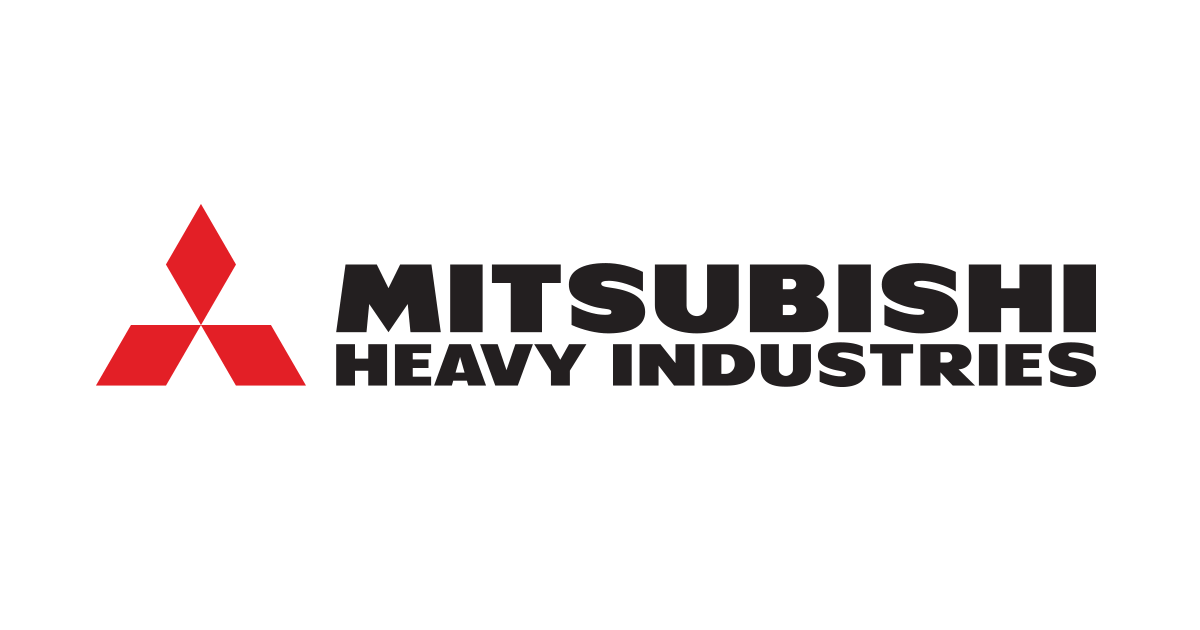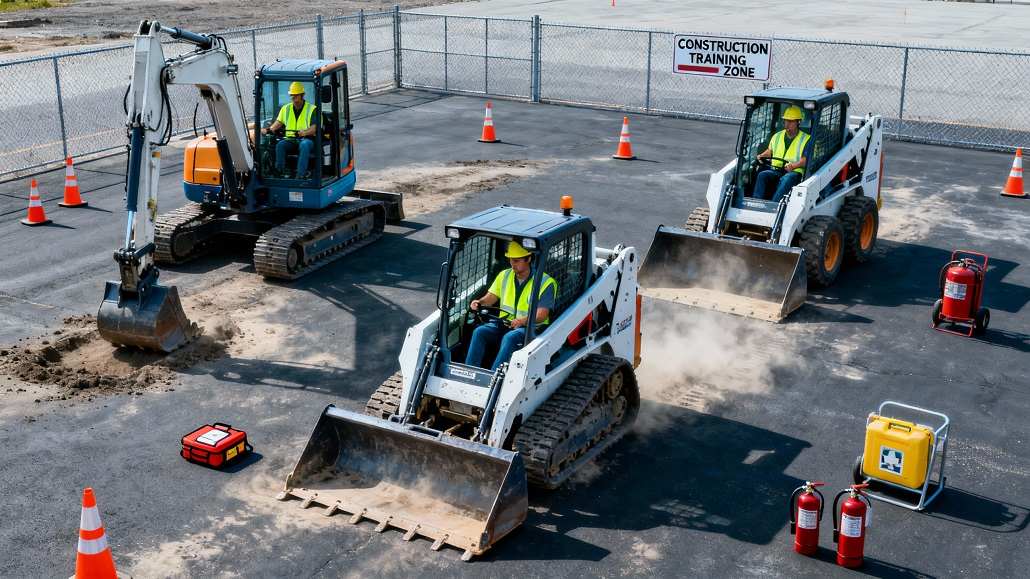Hydrogen-Powered Equipment: The Future of Sustainable Construction
Milton D’Silva explores the present status of preparedness of OEMs for hydrogen powered construction equipment. Green hydrogen is produced through the electrolysis process using electricity. Image by Freepik Just two days of rain in mid-September 2024 in parts of the Sahara desert that fall in Morocco caused severe flooding and 18 deaths. Sahara is the world’s largest hot desert and spans about a dozen countries in North Africa. Reports indicate it was the heaviest concentration of rain in the Sahara desert in two days in the last 50 years. The average annual rainfall in the Sahara region is around 76 mm. The Moroccan village of Tagounite received 100 mm rain in just 24 hours, which even the parched desert could not absorb in the absence of any drainage system, which resulted in the flash flood. This is just another example of extreme climate events the world has been experiencing in recent years, attributed to the phenomenon of global warming caused by greenhouse gas (GHG) emissions. Over 75% of GHG emissions are caused by the burning of fossil fuels for power generation, transportation, industrial applications and other human needs like warming of homes and offices in cold weather conditions. Since most of the GHG emissions are caused by human actions, it is evident that only corrective counter actions by humans can help mitigate the disastrous consequences of global warming. One of the definite courses of actions initiated by the Paris Agreement of 2016 is the overarching goal to hold “the increase in the global average temperature to well below 2°C above pre-industrial levels” and pursue efforts “to limit the temperature increase to 1.5°C above pre-industrial levels”. In simple terms, this means that every business sector and segment that causes GHG emissions must initiate remedial measures to first reduce those emissions and then eliminate them completely to achieve the ‘Net-Zero’ target by 2050. The construction equipment segment of the building and construction sector is one such industry that is now ripe for decarbonisation, to wean away from fossil fuels to cleaner alternatives. Globally, the building and construction sector is considered the largest emitter of greenhouse gases, accounting for 37% of total emissions. Within the sector, construction equipment worldwide emits an estimated 400 million tonnes of CO2 annually on account of the fossil fuel used, which is equivalent to the amount emitted by international aviation. That, in effect, is where the solution lies, in finding an alternative to fossil fuels. There are several alternatives to fossil fuels used in transportation and construction equipment – whether mobile or stationary. For passenger cars and light vehicles, battery electric has emerged as a popular choice. This is also true of the construction equipment industry where the smaller, lighter models are now all available in all electric versions. Leading manufacturers of construction equipment like Caterpillar, Liebherr, Bobcat, Volvo CE, JCB, Komatsu, Hyundai CE, among others, all offer electric excavators, loaders, mining trucks and forklifts. Besides causing no direct emissions, all electric construction equipment and machinery are also silent in operation, making them highly suitable for operation in urban settings. The mid-range equipment is also available in electric and hybrid versions, the latter offering a compromise between the power of conventional IC engines with the convenience of electric operation where noise and emissions is a concern. For the heavy equipment though, hydrogen as fuel makes better sense – either as fuel cell electric vehicles (FCEVs) with all the advantages of electric drive train, or as IC engines powered by hydrogen rather than fossil fuels, for heavy duty operations with long operating hours. A fuel cell works much like a battery, except that it generates its own electricity from the hydrogen onboard rather than being charged from an external source. Unlike batteries, fuel cells do not need recharging as long as the fuel, in this case hydrogen, is refilled, which means FCEVs can deliver longer driving ranges, and therefore are more feasible for long-haul transportation and for powering heavier construction equipment. Hydrogen powered IC engines, on the other hand, use similar technology to existing propulsion systems, which makes them easier to adapt for hydrogen use. Apart from that, hydrogen engines can be designed to match the performance and driving characteristics of existing machines. Besides, they have a cost advantage ober FCEVs. Hydrogen as a clean fuel Hydrogen is the most abundant chemical element in the universe – and the lightest – found in water and organic compounds in molecular form. In nature, hydrogen is very scarce as a gas, but it can be produced from a variety of sources. Under standard conditions, it is a colourless, odourless, non-toxic and a highly combustible gas. Though hydrogen is referred to as fuel and is in fact us

Milton D’Silva explores the present status of preparedness of OEMs for hydrogen powered construction equipment.

Just two days of rain in mid-September 2024 in parts of the Sahara desert that fall in Morocco caused severe flooding and 18 deaths. Sahara is the world’s largest hot desert and spans about a dozen countries in North Africa. Reports indicate it was the heaviest concentration of rain in the Sahara desert in two days in the last 50 years. The average annual rainfall in the Sahara region is around 76 mm. The Moroccan village of Tagounite received 100 mm rain in just 24 hours, which even the parched desert could not absorb in the absence of any drainage system, which resulted in the flash flood. This is just another example of extreme climate events the world has been experiencing in recent years, attributed to the phenomenon of global warming caused by greenhouse gas (GHG) emissions. Over 75% of GHG emissions are caused by the burning of fossil fuels for power generation, transportation, industrial applications and other human needs like warming of homes and offices in cold weather conditions.
Since most of the GHG emissions are caused by human actions, it is evident that only corrective counter actions by humans can help mitigate the disastrous consequences of global warming. One of the definite courses of actions initiated by the Paris Agreement of 2016 is the overarching goal to hold “the increase in the global average temperature to well below 2°C above pre-industrial levels” and pursue efforts “to limit the temperature increase to 1.5°C above pre-industrial levels”. In simple terms, this means that every business sector and segment that causes GHG emissions must initiate remedial measures to first reduce those emissions and then eliminate them completely to achieve the ‘Net-Zero’ target by 2050. The construction equipment segment of the building and construction sector is one such industry that is now ripe for decarbonisation, to wean away from fossil fuels to cleaner alternatives. Globally, the building and construction sector is considered the largest emitter of greenhouse gases, accounting for 37% of total emissions. Within the sector, construction equipment worldwide emits an estimated 400 million tonnes of CO2 annually on account of the fossil fuel used, which is equivalent to the amount emitted by international aviation. That, in effect, is where the solution lies, in finding an alternative to fossil fuels.
There are several alternatives to fossil fuels used in transportation and construction equipment – whether mobile or stationary. For passenger cars and light vehicles, battery electric has emerged as a popular choice. This is also true of the construction equipment industry where the smaller, lighter models are now all available in all electric versions. Leading manufacturers of construction equipment like Caterpillar, Liebherr, Bobcat, Volvo CE, JCB, Komatsu, Hyundai CE, among others, all offer electric excavators, loaders, mining trucks and forklifts. Besides causing no direct emissions, all electric construction equipment and machinery are also silent in operation, making them highly suitable for operation in urban settings. The mid-range equipment is also available in electric and hybrid versions, the latter offering a compromise between the power of conventional IC engines with the convenience of electric operation where noise and emissions is a concern. For the heavy equipment though, hydrogen as fuel makes better sense – either as fuel cell electric vehicles (FCEVs) with all the advantages of electric drive train, or as IC engines powered by hydrogen rather than fossil fuels, for heavy duty operations with long operating hours.
A fuel cell works much like a battery, except that it generates its own electricity from the hydrogen onboard rather than being charged from an external source. Unlike batteries, fuel cells do not need recharging as long as the fuel, in this case hydrogen, is refilled, which means FCEVs can deliver longer driving ranges, and therefore are more feasible for long-haul transportation and for powering heavier construction equipment. Hydrogen powered IC engines, on the other hand, use similar technology to existing propulsion systems, which makes them easier to adapt for hydrogen use. Apart from that, hydrogen engines can be designed to match the performance and driving characteristics of existing machines. Besides, they have a cost advantage ober FCEVs.
Hydrogen as a clean fuel
Hydrogen is the most abundant chemical element in the universe – and the lightest – found in water and organic compounds in molecular form. In nature, hydrogen is very scarce as a gas, but it can be produced from a variety of sources. Under standard conditions, it is a colourless, odourless, non-toxic and a highly combustible gas. Though hydrogen is referred to as fuel and is in fact used as one, it is not a fuel in the strict sense of the term. The correct way to describe hydrogen is that it is an energy carrier. Hydrogen can store, move, and deliver energy that's produced from other sources, and can be used as a fuel in fuel cells to generate electricity, power, and heat. It can also be used as a substitute of fossil fuels in combustion engines with certain modifications in the fuel delivery systems and combustion mechanism.
Hydrogen has several advantages, of which three can be singled out as the most significant when used as fuel. These are:
- High energy content: Hydrogen has the highest energy content of any common fuel by weight.
- Clean burning: Hydrogen doesn't produce harmful emissions when burned.
- Versatile: Hydrogen can be used in a variety of applications.
Having established the suitability of hydrogen as a clean fuel for construction equipment, it is necessary to understand how it can be accomplished in terms of tweaking the existing production process of conventional machinery and equipment to make them suitable for operation with hydrogen on one hand, and creating the infrastructure for production and distribution of hydrogen on the other. There are a number of factors involved in this transition of which the foremost is the cost of the transition. For an industry operating in a highly competitive environment, any change comes with a host of implications, the biggest obstacle being the resistance to change, a very human trait.
Creating a hydrogen ecosystem
Before proceeding to examine the production and logistics of hydrogen it is important to reiterate a few facts about this element:
- Hydrogen is an energy carrier, which means it is a secondary source of energy. Hydrogen must be produced from other sources of energy like fossil fuels, water, electricity and/or biomass, and then used as a fuel.
- Hydrogen has the highest energy content of any common fuel by weight (about three times more than gasoline), but it has the lowest energy content by volume as a liquid (about four times less than gasoline).
- It takes more energy to produce hydrogen than what is provided when converted into useful energy, which makes it costlier than fossil fuels.
- The importance of hydrogen as a fuel is due to its high energy content per unit of weight, which makes it ideal as a rocket fuel and for electricity in spacecraft with fuel cells, where high cost is not a constraint.
Based on how clean the hydrogen is, it is colour coded. The three most common types of hydrogen are Grey, Blue and Green.
Grey: The most common form of hydrogen production today, Grey hydrogen is created from natural gas, or methane, using the SMR method. During this process, carbon dioxide (CO2) is produced as a byproduct, greenhouse gases released in the atmosphere, and hence the Grey ‘rating’. Grey hydrogen is the cheapest form of hydrogen today.
Blue: An improvement over the Grey type, Blue hydrogen is produced with the same SMR method using natural gas, similar to grey hydrogen, but there is an additional step to reduce carbon emissions. The additional step is the process of carbon capture and storage (CCS), a technology used to capture the CO2 emissions generated during the process. This makes Blue hydrogen expensive compared to Grey.
Green: Green hydrogen is produced through the electrolysis process using electricity. What sets green hydrogen apart is that the electricity used in the process comes from renewable energy sources, such as wind, solar, or hydropower, and not generated with fossil fuels, making it an environmentally friendly option. But this also makes Green hydrogen more expensive than Grey and Blue as renewable energy in general costs more; but if the process uses surplus renewable energy from wind and solar power, then the equation changes, and so do the cost implications, which is how it is expected to cost less.
Besides these three types, there are a few more shades of hydrogen, but these are not relevant here as only Green hydrogen makes sense from the net zero perspective for use in construction equipment.
Storage and transportation of hydrogen
The other important aspect in the hydrogen ecosystem is storage and transportation. Storage of hydrogen as a gas requires high-pressure tanks that can withstand 350-700 bar (5,000-10,000 psi) tank pressure. Storage of hydrogen as a liquid requires cryogenic temperatures because the boiling point of hydrogen at one atmosphere pressure is -252.8°C. This means the requirements of storage tanks either at production site or distribution point, are very stringent. On the plus side, hydrogen is also one of the most efficient ways to store and transport renewable energy so it plays an important role in the future energy supply.
There are several modes of transportation for hydrogen depending on the purpose, quantity and distance to be covered. These are:
- Pipelines: Most economical for large-scale, long-distance transport.
- Tanker trucks (liquid hydrogen): Suitable for shorter distances, flexible routing.
- Rail transport: Efficient for bulk transport over long distances.
- Ships (liquid hydrogen): Ideal for international trade, bulk transport.
- Containers (compressed hydrogen): Flexible, scalable, and suitable for smaller quantities.
- Compressed hydrogen gas (CHG): Stored in cylinders or containers at 350-700 bar.
- Liquid hydrogen (LH2): Stored at -253°C, ideal for large-scale transport.
- Hydrogen absorption materials: Solid materials absorbing hydrogen, reducing storage pressure.
- Liquid organic hydrogen carriers (LOHC): Hydrogen bound to organic compounds, easy to transport.
- Ammonia (NH3): Hydrogen-rich compound, easily transportable, and convertible back to hydrogen.
The push for hydrogen by OEMs in construction equipment
Most OE manufacturers today either have a working model powered by hydrogen ready for commercial use, or prototypes under various stages of development and testing. Presented here is a snapshot of the progress made so far in this direction by 5 leading OEMs in construction equipment.
JCB
UK-based J C Bamford Excavators Ltd – well known globally as JCB – has the distinction of developing the construction industry’s first ever hydrogen powered excavator. Launched in 2020, the 20-tonne JCB 220X excavator is powered by a hydrogen fuel cell running the electric drivetrain with water as the only emission from the exhaust. Later, JCB again made news with the launch of the new port fuel injected, 4.8L inline-four hydrogen combustion engine, Model 448 ABH2, which debuted at the Conexpo 2023 show in Las Vegas in March 2023. The company has earmarked GBP 100 million for the project to produce super-efficient hydrogen engines, employing a team of 150 engineers with more than 50 prototypes already manufactured at the UK engine plant. Later, in December 2023 at the EXCON show in India, the company unveiled the 3DX backhoe loader, powered by a hydrogen internal combustion engine (H2ICE). “Fossil fuels are not the future. Developed from first principles, the JCB hydrogen engine has been designed to optimise the combustion of hydrogen, so that it can deliver the same power, the same torque, and the same efficiency that powers JCB machines today, but in a zero-carbon way,” said JCB Chairman Lord Bamford, speaking on the occasion.

JCB backhoe loader powered by a hydrogen internal combustion engine. Image source: JCB
JCB has also installed its hydrogen ICE engine into a 7.5 tonne Mercedes truck. To support hydrogen equipment, the company has developed a hydrogen refuelling unit which stores hydrogen in cylinders. Further, there is the hydrogen generator, the G60RS H, powered by the JCB hydrogen combustion engine, designed for supplying clean electricity at remote construction sites.
Liebherr
The origins of Liebherr date back to 1949 when Hans Liebherr who was managing his family’s construction business invented the mobile tower crane with the help of his design engineers. The family-run company today manufactures a wide range of construction equipment, including earthmoving machines, tower cranes, and deep foundation machines. In July 2023, Liebherr unveiled the world’s first large wheel loader – the L 566 H – with a hydrogen combustion engine, at a trade event held at its Bischofshofen plant in Salzburg, Austria. A hydrogen filling station was also opened, a first for the region. Liebherr considers the internal combustion engine as one of the most capable powertrains for high mechanical power under extreme operating conditions in the off-highway industry.
Later, Liebherr announced that STRABAG, one of Europe’s largest construction companies, will be the first customer to test the L 566 H hydrogen wheel loader extensively over a period of two years. With this pilot project, Liebherr and STRABAG are demonstrating how emissions can be reduced in a sector that is difficult to decarbonise by means of alternative fuels. The hydrogen powered L 566 H should save up to 100 tonnes of CO2 each year, corresponding to about 37,500 litres of diesel. “We want to be climate neutral by 2040. The only way to achieve this is by consistently and comprehensively saving CO2, for example, in the operation of construction machinery,” says STRABAG CEO Klemens Haselsteiner, about the company’s cooperation with Liebherr for decarbonisation in the construction sector.

The Liebherr L 566 H hydrogen wheel loader will be tested extensively by STRABAG. Image source: Liebherr
Volvo CE
Volvo Construction Equipment – Volvo CE – a major international company which develops, manufactures, and markets equipment for construction and related industries, has already on offer one of the largest range of battery-electric products. The company has also been exploring the potential of electrification through hydrogen fuel cell technology, and in 2022 started testing the world’s first prototype hydrogen articulated hauler – the Volvo HX04. This was the result of a research project Volvo CE ran between 2018 and 2022, with State support from various Swedish institutions, and PowerCell Sweden, a developer of fuel cell-based hydrogen-electric power solutions. The RISE Research Institutes of Sweden provided specialist competence on driveline development and safety. According to PowerCell, the vehicle properties are optimised through dimensioning between the battery and the fuel cell; for example, a larger battery and a small fuel cell as a ‘range-extender’ or a larger fuel cell and a small battery, used only for handling dynamic loads. An added benefit of hydrogen fuel cell technology is that, without an internal combustion engine, hydrogen-powered machines will be comparable to the low noise levels of electric machines.
Volvo CE is part of the Volvo Group, whose stated mission is to be 100% fossil free by 2040. The Volvo HX04 is an important part of this mission as the results of the project will provide important insights into the possibilities provided by hydrogen and fuel cells as the company continues research for future product development programs.

The HX04 prototype is an important part of Volvo CE’s mission to be 100% fossil free by 2040. Image source: Volvo CE
Develon
Develon, formerly Doosan, was established in 1896 in Korea and has a long history of machinery manufacturing. It was later acquired by HD Hyundai and became Hyundai Doosan Infracore. In 2023, Hyundai Doosan Infracore unveiled the new brand identity, Develon (a combination of the words ‘develop’ and ‘onwards’), for the first time at the US ConExpo event. Develon today is a brand of heavy construction equipment that manufactures a range of equipment, including excavators, wheel loaders, and articulated dump trucks.
Also at the ConExpo 2023 show, Hyundai had a prototype 14-tonne hydrogen fuel cell model, the HW155H, demonstrated in its booth. The HW155H is powered by hydrogen fuel cells developed through a partnership between Hyundai sister companies – Hyundai Motors and Hyundai Mobus – for development of hydrogen-powered medium- and large-capacity excavators and forklifts. Later, at the Intermat 2024 exhibition held at the Paris-Nord Villepinte in France in April, HD Hyundai Infracore participated under the Develon brand for the first time and also showcased another model, the DL250-FCEV for the first time, meeting global carbon reduction trends. This versatile machine with a single platform design significantly reduces carbon emissions. It runs on hydrogen fuel cells but can also transition to a Battery Electric Vehicle (BEV).

The DL250-FCEV is a versatile machine with a single platform design. Imager source: HD Hyundai Infracore
Apart from the fuel cell version, HD Hyundai Infracore is also expanding its partnership with Korean East-West Power to develop hydrogen IC engines. To this end, it signed a MoU to design, develop and commercialise Hydrogen Internal Combustion Engines (H2ICE) in July 2024 at its HD Hyundai Global R&D Centre in Pangyo, Korea. H2ICEs, which use hydrogen as the only combustion fuel, have an advantage in both reducing costs and advancing commercialisation goals as it uses existing diesel engine technologies and facilities to reach zero carbon emissions.
Komatsu
Founded in 1921 in Japan by Meitaro Takeuchi in the town that shares the same name, Komatsu is a leading manufacturer of construction, mining, forestry, and industrial heavy equipment. With over 100 years of rich legacy, the company introduced a range of small electric excavators in 2023, developed jointly with Proterra of the United States, the latter supplying the lithium-ion batteries. In May 2023, Komatsu announced it has developed a concept machine for a medium-sized hydraulic excavator powered by hydrogen fuel cells. While the key components for the concept machine were developed by Komatsu, the company relied on the hydrogen fuel cell system and hydrogen tank produced by Toyota. Komatsu plans commercial production of medium-sized and large construction equipment powered by hydrogen fuel cells in the near future.
More recently, in December 2023, Komatsu announced that it will co-develop with General Motors a hydrogen fuel cell power module for Komatsu’s 930E electric drive mining truck, the world’s best-selling ultra-class haul truck. GM, a leader in hydrogen fuel cell technology, and Komatsu, a global manufacturer of mining and construction equipment, will jointly design and validate the technology. Lightweight and quick to refuel, hydrogen fuel cells are ideal for electrifying applications traditionally powered by diesel engines. Hydrogen provides an effective method to package large quantities of energy onboard the vehicle, without compromising payload carrying capacity. Both GM and Komatsu are committed to carbon neutrality. While Komatsu has set a target of reducing its global emissions by 50% by 2030 and a challenge target of achieving carbon neutrality by 2050, GM’s target is to be fully carbon-neutral in both products and operations by 2040.

The Komatsu concept machine – a medium-sized hydraulic excavator powered by hydrogen fuel cells. Image source: Komatsu
Conclusion
To the construction equipment sector, like the rest of the industry, the writing on the wall is clear – decarbonise or perish. It is not going to be easy as there are many hurdles on this path, but the early steps have been initiated. There is a cost, but there are also benefits. According to a recent Climate Action release from the World Economic Forum, the building sector is key to the fight against climate change. The WEF cites a study and analysis it has done with the Boston Consulting Group that suggests the green transition of building value chains can unlock US$1.8 trillion in market opportunities globally, besides significant social and environmental value.
The hydrogen ecosystem is evolving at a brisk pace. It is not just about the construction equipment segment but concerns the entire transportation sector and machinery that presently uses fossil fuels. Though hydrogen is considered ideal fuel for commercial vehicles, leading automakers like Toyota and BMW are betting big on hydrogen powered cars and that could happen as early as 2028!
As for the elephant in the room – the cost of producing Green hydrogen – it is expected to come down progressively, in tandem with the lowering cost of producing renewable energy, which is happening currently. The tipping point is widely expected to reach by 2030, and estimates suggest by 2050, green hydrogen could be produced for $0.70–$1.60 per kg in most parts of the world, which is competitive with natural gas.
The environmental clock is ticking and it's a call to action to reduce greenhouse gas emissions and transition to renewable energy. Within six weeks from the incident of flash floods in the Sahara, torrential rain caused flash flooding in the southeast of Spain in the last week of October, killing over 200 persons and causing incalculable economic losses. The time to act is now.
References
1. https://unfccc.int/process-and-meetings/the-paris-agreement
2. https://www.industryemea.com/market-overview/75637-the-green-hydrogen-path-to-net-zero
3. https://www.spglobal.com/marketintelligence/en/news-insights/latest-news-headlines/study-finds-green-hydrogen-can-be-competitive-with-fossil-fuels-as-soon-as-2030-74961136
4. https://www.reportlinker.com/article/7829#
Powered by
Induportals Media Publishing

 machineryasia
machineryasia 








